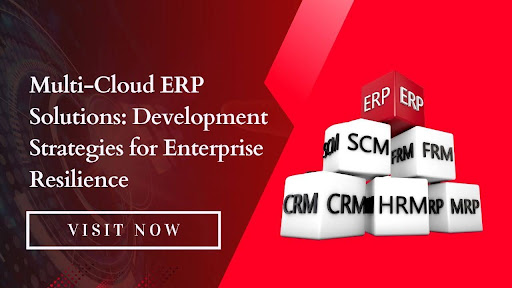Multi-Cloud ERP Solutions: Development Strategies for Enterprise Resilience
The fundamental business principle of avoiding single points of failure has never been more relevant than in today’s cloud infrastructure decisions. Companies worldwide are discovering that relying on a single cloud provider can leave them vulnerable to outages, price hikes, and limited functionality. That’s where multi-cloud ERP solutions come into play – and honestly, they’re changing the game for enterprise resilience.
What Exactly Are Multi-Cloud ERP Solutions?
Think of multi-cloud ERP as spreading your enterprise software across different cloud neighbourhoods. Instead of having everything housed with just Amazon Web Services or Microsoft Azure, businesses are now mixing and matching – maybe running their finance modules on AWS while keeping inventory management on Google Cloud Platform.
This isn’t just a fancy tech trend. Real companies are seeing tangible benefits from this approach, and it’s becoming the smart way to handle enterprise software architecture.
Why Companies Are Making the Switch
The benefits sound almost too good to be true, but they’re very real:
- Zero Single Points of Failure: When Microsoft Azure went down for hours last year, companies using multi-cloud setups kept running business as usual.
- Cherry-Picking the Best Features: Each cloud provider has strengths – AWS dominates in compute power, while Google excels in data analytics.
- Negotiating Power: Ever tried getting a discount when you’re locked into one provider? Multi-cloud gives businesses leverage.
- Meeting Compliance Requirements: Some regulations require data to stay within specific geographic boundaries – multi-cloud makes this manageable.
- Insurance Against Disasters: Natural disasters, cyberattacks, or even provider bankruptcies become less threatening.
Smart Development Strategies That Actually Work
Planning Before Building
Most failed ERP projects share one thing: poor planning. Multi-cloud adds complexity, so the planning phase becomes even more critical. Companies need to map out which systems go where and how they’ll communicate. Professional ERP software development services often spend weeks just on this planning phase – and for good reason.
Getting Data to Play Nice Everywhere
Here’s where things get tricky. Your sales data needs to match across all platforms, whether it’s stored in AWS or Azure. The solution involves:
- Setting up automatic data synchronisation that runs behind the scenes
- Creating backup systems that work across different cloud providers
- Building secure tunnels for data to travel between clouds safely
- Establishing clear rules about who owns what data where
Security That Works Everywhere
Managing security across multiple clouds feels like trying to lock multiple houses with different key systems. The secret lies in creating unified security protocols that work consistently, regardless of the cloud provider. This means single sign-on systems that recognise users across platforms and encryption methods that translate properly between different environments.
Making Different Systems Talk to Each Other
Getting systems from different cloud providers to communicate smoothly requires some serious technical wizardry. Development teams build custom APIs and middleware – think of them as translators helping different cloud services understand each other.
Finding the Right Development Partner
Not every ERP development company understands multi-cloud complexity. The learning curve is steep, and mistakes can be expensive. Look for partners who have battle-tested experience with enterprise-level projects and can show actual case studies of successful multi-cloud implementations.
Red flags include companies that promise quick fixes or those who haven’t worked with all major cloud platforms. Multi-cloud expertise can’t be faked – it comes from years of dealing with real-world integration challenges.
Getting Started Without Breaking Everything
Test Drive First
Smart companies start small. Pick a non-critical business function – maybe employee directory management or basic reporting – and use it to test multi-cloud approaches. Learn from these smaller projects before tackling mission-critical systems like financial reporting or inventory management.
Set Clear Rules Early
Without proper governance, multi-cloud environments become chaotic quickly. Establish clear policies about data handling, security protocols, and decision-making processes before deployment begins.
Keep Watch on Everything
Multi-cloud environments generate lots of moving parts. Monitoring tools help track performance, costs, and security across all platforms simultaneously. Companies often discover cost savings and performance improvements they never expected.
The Road Ahead
Multi-cloud ERP isn’t just a trend – it’s becoming the standard approach for forward-thinking enterprises. The companies implementing these strategies today are building competitive advantages that will serve them for years to come.
The technology landscape keeps evolving, but the core principle remains constant: diversification reduces risk while increasing opportunities. Multi-cloud ERP solutions deliver both, provided they’re implemented thoughtfully with experienced guidance.
Success in multi-cloud ERP comes down to careful planning, expert execution, and continuous optimisation. The payoff – in terms of resilience, performance, and cost control – makes the investment worthwhile for serious enterprises.





